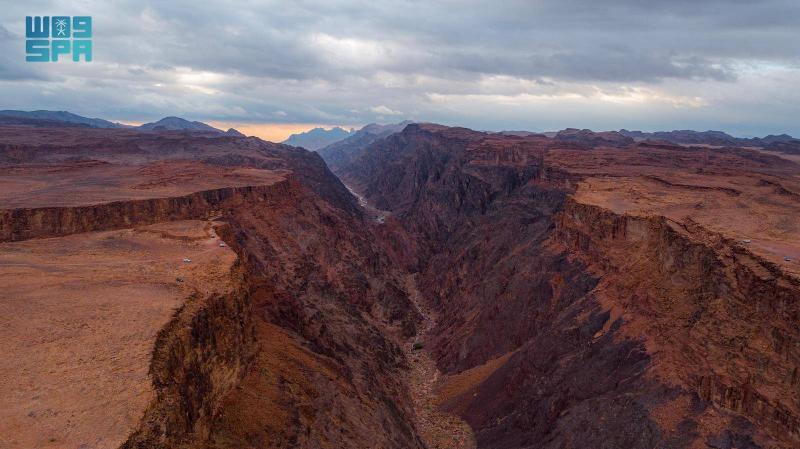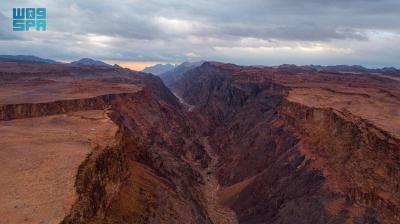The Tabuk region in Saudi Arabia consistently makes its mark in the record of geology and its wonders, attracting visitors from all over with its unique nature. One of the most prominent geological sites is "Al-Shaq," located approximately 60 km west of Tabuk city, creating a slope beside a flat land that includes a deep canyon. This canyon is considered one of the faults, attributed by the Saudi Geological Survey to the movements accompanying the opening of the Red Sea. The height on either side of the canyon reaches about 450 meters and extends approximately 70 km east of the Red Sea. This fault occurred in the basement rocks of the Arabian Shield, which date back to pre-Cambrian times, overlaid by Cambrian sandstone layers.
The "Al-Shaq" site is one of the most beautiful natural geological landmarks and boasts many remarkable features that make it one of the top tourist attractions. It is considered one of the clearest boundaries or "contact limits" between the rocks of the Arabian Shield below and the sedimentary cover rocks above. It is a constant destination for tourists, with nearly every visitor to the Tabuk region taking a trip to Al-Shaq. The lens of "WAS" has captured some of its beautiful features that contain treasures and landmarks waiting to be further discovered and prepared for the local community and visitors, who come from various nationalities.




